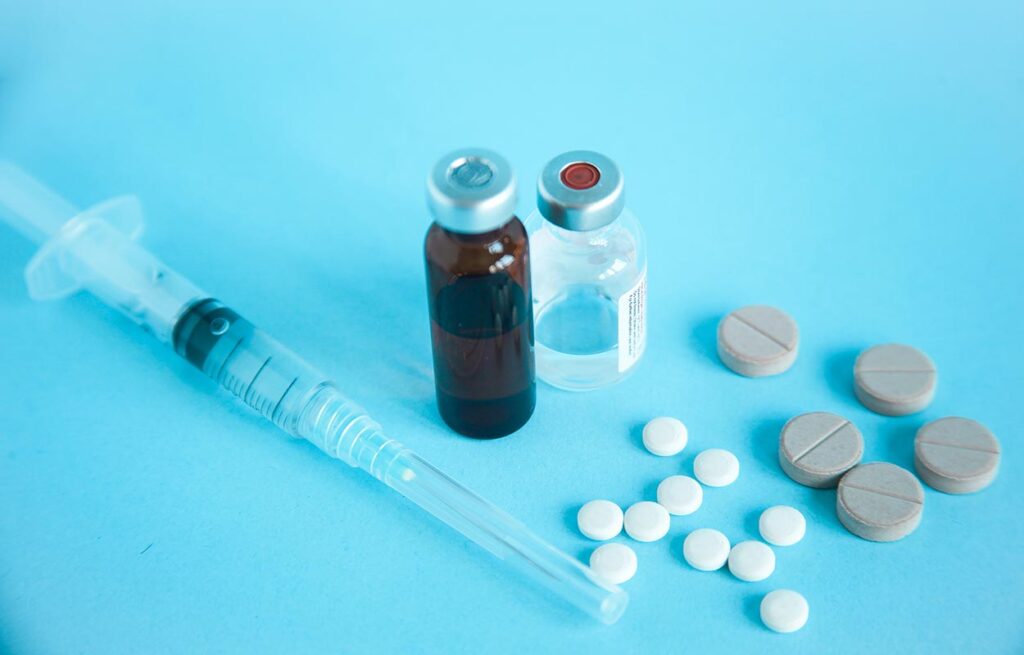How Long Does Ambien Stay in Your System? A Complete Detection Guide

Key Points
- Ambien is a prescription insomnia medication that can take from 7 to 27 hours to be completely eliminated from the body.
- The type of drug test, formulation, dosage, and your metabolism all affect how long Ambien stays in your system.
- Understanding Ambien symptoms and signs of abuse is crucial for safe use.
Millions of Americans struggle with insomnia every night. To stop the racing thoughts, restlessness, and sleeplessness, many turn to sedative medications like Ambien for relief.
As with any medication, understanding how Ambien interacts with your body is essential for safety and efficacy. Whether you’re preparing for a drug test or exploring treatment options, timing plays a major role in its effects and detectability.
What Is Ambien?
Ambien is the brand name for zolpidem, a prescription sleep medication classified as a sedative-hypnotic. It has been FDA-approved since 1992 for short-term treatment of insomnia. [1]
How Ambien Works
As a non-benzodiazepine hypnotic, Ambien mimics gamma-aminobutyric acid (GABA) activity in the brain. [2] By binding to the BZ1 receptor, Ambien promotes relaxation and reduces brain activity, helping you fall asleep faster. [3]
Common Ambien Formulations
- Immediate-release tablets for falling asleep quickly
- Extended-release (Ambien CR) for falling and staying asleep longer
Typical Side Effects
Common side effects of Ambien include:[4]
- Next-day drowsiness
- Dizziness or lightheadedness
- Headache
- Nausea
- Muscle weakness
- Sleepwalking or sleep driving
- Amnesia
How Long Does Ambien Stay in Your System?
The half-life of Ambien is approximately 1.4 to 3.8 hours in healthy adults. [5] However, complete elimination may take 7–27 hours depending on individual factors.
Detection Windows by Test Type
Urine Test:
- Detectable 24–48 hours after last dose
- Most common screening method
Blood Test:
- Detectable for 6–20 hours
- Used primarily in clinical settings
Saliva Test:
- Detectable for 8–24 hours
- Less common but non-invasive
Hair Test:
- Detectable up to 90 days
- Rarely used for Ambien
Peak Concentration Timing
Ambien reaches peak blood levels within 0.75 to 2.6 hours after ingestion. [6]
Factors That Influence Ambien Detection
Age and Metabolism
Older adults metabolize Ambien more slowly, extending elimination time. [7] Those with faster metabolisms clear the drug sooner.
Liver and Kidney Function
The liver metabolizes most of Ambien, while kidneys excrete its byproducts. Impaired liver or kidney function can significantly increase detection time.
Dosage and Frequency
Higher or repeated doses take longer to leave the body. The standard Ambien dose is 5–10 mg for adults or 6.25–12.5 mg for Ambien CR. [8]
Body Composition
Because Ambien is lipophilic, individuals with higher body fat may retain the drug longer.
Does Ambien Have Abuse Potential?
Yes. Ambien is classified as a Schedule IV controlled substance, indicating low but present abuse potential. [9]
Although it doesn’t produce strong euphoria, misuse can cause dependence. Withdrawal symptoms, including seizures, have been documented. [10]
Drug Testing Implications
Medical Use
- Verify compliance
- Check for interactions or overdose
- Monitor recovery progress
Legal and Employment Contexts
- Ambien use can impair driving; wait at least 7–8 hours before operating a vehicle. [11]
- Standard workplace drug panels don’t usually test for Ambien, but specialized screens may.
Health and Safety Considerations
Even after Ambien’s effects fade, residual impairment can persist. Some experience sleepwalking or sleep-driving episodes. [12]
Seek Professional Support
If Ambien use becomes problematic, professional help is available. Signs you may need support include increasing dosage, dependence, or withdrawal when stopping.
Do not quit abruptly. Medical detox and rehabilitation programs can help you safely stop Ambien and build long-term recovery.




